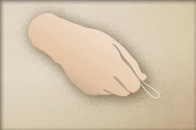Fishing First Aid
When going out fishing, it's always a good idea to carry a fishing first aid kit to help ensure everyone is safe.
Ensuring your safety on the water is paramount, and being prepared for unforeseen situations is key to a successful and enjoyable fishing experience. Choosing the right first aid kit is a crucial step in this preparation, and understanding its components is essential for addressing various medical scenarios. Stay informed and ready with these essential fishing first aid tips, ensuring a secure and enjoyable outing for you and your fellow anglers.
Choosing A First Aid Kit
Choosing an appropriate fishing first aid kit has much to do with the environment you will be fishing in. For example, fishing from a shoreline generally eliminates the need for your kit to have a waterproof casing, as is standard for fishing boat first aid kits (also referred to as marine emergency kits). The further away you plan to fish from shore, the more items will be needed in your boat safety kit to handle more extensive injuries that may occur far from shore, such as splints, etc.). There are a variety of kits on the market to handle all your fishing first aid needs.
Removing A Hook From Your Skin: Steps
Occasionally an angler will get a fishhook in the skin. First and foremost, removing a fishhook is best left to a doctor or a hospital emergency room. Once a fishhook enters the skin beyond the barb, it is hard to remove.
Also, never attempt to remove a hook from around a person's eyes, face, the back of the hands, or any area where ligaments, tendons, or blood vessels are visible.
With that, there is a method that can be used to remove a hook if it is not in a vital area.
STEP 1: First, cut the hook away from the rest of the fishing lure. Then, put a loop of heavy twine or fishing line around the bend of the hook

STEP 2: Next, hold down the eye and shank of the hook, pressing it lightly to the skin.
.jpg)
STEP 3: Finally, grasp the loop in the line and, with a sharp jerk, pull the hook free.

Cuts And Bleeding
In all cases of serious bleeding where there is a large or deep cut, call a doctor, get the victim to a hospital, or call paramedics at once. Treat small cuts with adhesive bandages and antiseptic. For large or deep cuts, pressing directly on the wound with a clean gauze pad or handkerchief will reduce bleeding. Use the procedures taught at Red Cross training courses to ensure that proper amounts of pressure are applied.
Hypothermia
Hypothermia means your body is losing heat faster than it can produce it. Without treatment, your life is in danger. Exposure to the cold along with wind, wetness and exhaustion causes hypothermia. It doesn't have to be freezing cold for you to develop hypothermia. Many cases of hypothermia develop in air temperatures between 30 and 50 degrees Fahrenheit. Cold water takes away body heat 25 times faster than air of the same temperature. Any water colder than 70 degrees can cause hypothermia.
Protect yourself from hypothermia: Stay warm and dry. Remember that wind makes you colder. If you fall into cold water with a PFD on, it’s best to go to shore if possible. If not, don't thrash around. Excess movement speeds up heat loss. Instead, bring your knees up towards your chin and bend your legs as though you are sitting. This is called the Heat Escape Lessening Position or "H.E.L.P." This fishing first aid tip helps hold body heat and slows cooling.
How to detect hypothermia: Watch for these signs including uncontrollable shivering, fumbling hands, frequent stumbling, a lurching walk, vague slow speech, drowsiness or apparent exhaustion.
How to treat hypothermia: Get the victim out of the cold. Give warm drinks, remove all wet clothing and get the victim into dry clothes, and if possible, into a warm sleeping bag next to another person to provide body heat. Try to keep the person awake.
Other Medical Problems
Other medical problems that may require fishing first aid are snakebites and broken bones. These are rare, but serious, emergencies. A person with a broken bone should not be moved until medical help arrives.
Snakes rarely bite if they are left alone. A person bitten by a poisonous snake should be kept calm and quiet and taken to a doctor or hospital at once. If possible, determine the type of snake that caused the bite.
Content courtesy of the Future Fisherman Foundation.
Prepare yourself to be safe and comfortable on your next fishing trip with these basic items.
KEEP LEARNING

How to Tie the Non-Slip Loop Knot
The non-slip loop knot is a popular and reliable choice for securing hooks, lures, and other tackle to your fishing line.
LEARN MORE

Socials
Take me fishing social media links
LEARN MORE

TakeMeFishing x Teen Vogue
Join us on a creative journey as fashion designer Ahmrii Johnson walks us through her collaborative vision and process with Teen Vogue and fashion brand, Rentrayage, to create a special piece.
LEARN MORE


.png?lang=en-US&ext=.png)